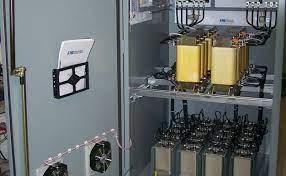The global power factor correction devices market size was valued at US$ 5,732.6 Mn in 2021 and is estimated to touch a valuation of US$ 6,025.9 Mn in 2022. Furthermore, with rising adoption across industrial and commercial sectors, the overall demand for power factor correction devices is slated to grow at a CAGR of 5.7% between 2022 and 2032, reaching a valuation of US$ 10,471.0 Mn by 2032.
More than 80% of the global market for power factor correction is currently accounted for by the industrial sector, according to end-use. Due to the rapidly expanding global population, demand from end-use industries like manufacturing, heavy industry, and the commercial sector is surging.
Power factor correction devices boost a load’s power factor, lowering electricity costs and boosting energy effectiveness. Due to their modular construction and small size, these devices help remove extra fees from the electricity supply, lessen energy waste, and reduce carbon emissions. They can also be installed in existing spaces.
By ensuring efficient power use, reducing capital costs, and boosting the facilities’ economic viability, power factor correction (PFC) device installation is expected to improve power quality in manufacturing facilities.
Europe is anticipated to hold the majority of the share in the global power factor correction market due to the escalating need for technology-driveniven products with increases-effectiveness and decreased power consumption. FMI predicts Europe to hold 28.9% of the total market share in 2022.
FMI’s latest analysis reveals that the power factor correction devices market accounts for 8 to 14% of its parent power quality equipment market.
In contrast to the 3.4% CAGR seen between 2017 and 2021, the demand for power factor correction devices is expected to grow consistently at a rate of 5.7% between 2022 and 2032. The global market for power factor correction devices is expanding as a result of the rising applications of these devices across various end-use industries.
Devices that correct for power factors are the best electronic components for lagging current compensation because they increase electricity efficiency and lower costs. These devices also have benefits like simple installation, maintenance, and repair procedures.
Key Players:
- Schneider Electric SE
- GE’s Grid Solutions
- TOSHIBA CORPORATION
- ABB Limited
- Eaton Corp.
- Hubbell Incorporated
- Siemens AG
- MITSUBISHI HEAVY INDUSTRIES, LTD.
- LARSEN & TOUBRO LIMITED
- TE Connectivity



































